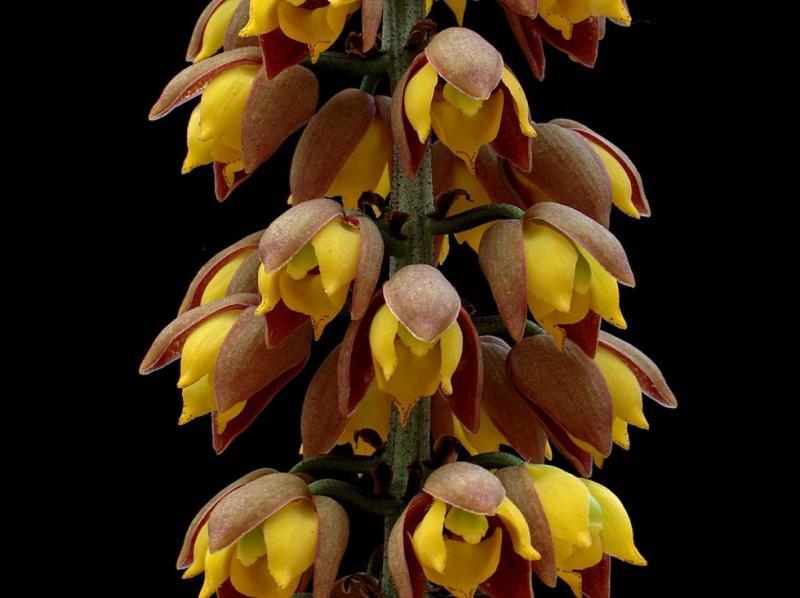Lueddemannia pescatorei
Also known as: Pescatore's Lueddemannia or Cycnoches triloba Lueddemannia triloba Acineta glauca Lueddemannia vyvereana Cycnoches lindleyi Lueddemannia pescatorea in the subfamily: Epidendroideae
Native to: Departamento del Huila - Colombia
General Information
Pescatore's Lueddemannia is a large sympodial cool to warm growing epiphytic orchid belonging to the sub family Epidendroideae native to Colombia. It is named after the Belgian Orchid Enthusiast in the 19th century.
Plant Description
Sympodial. Grows to 50cm. Each new growth has numerous erect rigid, lance shaped leaves that grow to 9-40cm long. Pseudobulbs grow to 7-13cm. The plant forms clusters over time
Substrate(s)
- Coarse
- Spaghnum Moss
Care Notes
These orchids like to be kept on the dry side, but may need to be watered daily during warm weather, and prefer a well draining mix or also do well mounted, provided they can be watered regularly.
These are quite a forgiving orchid, there are no special requirements to get this orchid to flower, just good care and consistent conditions. Larger plants may be more fussy and can react poorly to change; a poorly timed repotting, a pest infection or an unusually hot day can set them back for a couple of years. However, even plants that have been treated poorly can thrive, and if they are set back they often recover much stronger then they would otherwise be.
Climate
The orchids are well adapted for hot weather, accompanied by sporadic, unpredictable rainfall and a generally dry climate. They can tolerate a lot of neglect as they are quite used to it, however they can be prone to underwatering and may collapse in cold, wet weather.
For this reason it's best to dedicate a sheltered, protected area for them where the watering can be controlled, such as a corner of a greenhouse or in a sheltered balcony. They can also do well hung near the roof of a shadehouse or sheltered greenhouse where they receive the extra heat but not as much water as other plants.
Grows at low to high elevations. Rainfall ranges from 0mm to 201mm per day, heaviest in August and lightest in March. Humidity ranges from 62% to 81%, highest in August and lowest in March. Temperature ranges from 13C to 28C, highest in March (17C to 28C) and lowest in January (13C to 26C).Watering
Keep moisture levels up during hot weather as the plant is prone to dehydration
Fertiliser
Apply liquid based fertiliser per recommended directions. They can benefit from a high phosphate fertiliser leading up to flowering season, followed by a high nitrogen fertiliser when new growth appears, and a balanced fertiliser in other times. These orchids can also tolerate slow release fertiliser applied 1-2 pellets per cup (250ml) of media.
Use balanced fertiliser during Spring and Summer. Apply fertiliser regularly at half strength year round. Use a high Nitrogen fertiliser during Spring and Summer. Use a high Phosphorous fertiliser during Summer.Potting
Due to the growth nature of these plants they are best mounted onto cork, tree fern slabs, or even trees if the climate suits. Water regularly especially in hot weather.
Use water retentive media such as moss to prevent roots from drying out quickly This plant does very well in baskets or suspended pots This plant does well mounted.









